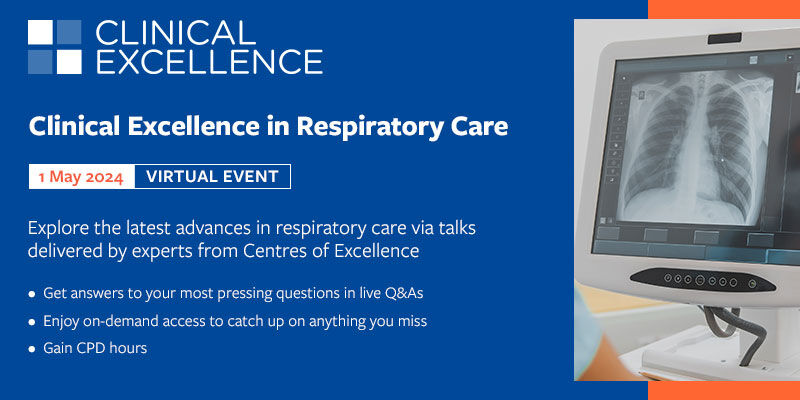For any health or social care professional, safeguarding vulnerable children in their care is one of the highest priorities. Providing staff with information to easily identify when a child they are treating may be at risk of abuse, has consequently become a paramount objective.
Responding to concerns raised in tragic child abuse cases, and to findings from the Report of the Children and Young People’s Health Outcomes Forum, ministers first announced the Child Protection Information Sharing (CP-IS) system in late 2012.
Set up to help save lives, CP-IS was created to provide frontline unscheduled care professionals with instant access to vital information – background that can quickly inform a decision to contact relevant social services when a child may be at risk.
Doctors and nurses are able to instantly see, via a flag on the child’s record, if the individual they are treating is subject to a child protection or a looked after child plan by the local authority. Through access to CP-IS, healthcare providers can configure their own systems so that professionals can also see when children have frequently attended emergency departments or urgent care centres. And where appropriate, unborn children can even be flagged on a mother’s record.
Local authorities using the system have drawn on the NHS number, so that vulnerable children in their care can be flagged up and identified by health professionals, whether the child arrives at their local hospital or at any unscheduled care setting in the country signed up to the system.
Tangible results achieved – but UK-wide adoption urgently
CP-IS has started to enable important results for safeguarding. In some cases this means substantially faster notification of a child’s attendance in the emergency department.
In another case, recounted by a senior NHS official, a vulnerable young woman came into A&E. Subject of a child protection order, she was pregnant and her unborn child also had a child protection plan. None of this was disclosed by the woman, but because of CP-IS, the emergency team was able to alert child protection staff.
As of April 2018, approximately 126,000 children are so far covered by CP-IS, with more than 5000 alerts now generated in a month. But more work still needs to be done to achieve the national picture necessary to protecting children whichever part of the country they travel to and whichever unscheduled care provider they visit. In March 2017, only 14% of health organisations and fewer than a third of local authorities were using CP-IS. There has since been renewed vigour for widespread adoption, encouraged from the centre. Now 70% of local authorities are live, along with 62% of healthcare organisations and 56% of individual healthcare settings.
Good progress is certainly evident. But with repeated extensions to national deadlines and initial slow uptake, there are important lessons to be learnt from early adopters where CP-IS has been deployed with relative ease, to now help remaining health and social care organisations across the country protect children.
Where trusts have made deployment easy
Homerton University Hospital NHS Foundation Trust became the first NHS provider to go live with real-time access to CP-IS in 2014. Determined to spearhead national adoption, the trust concluded that it would be too costly and time-consuming to develop and certify integrations between its individual IT systems and NHS Digital’s centrally held CP-IS database. Instead the trust worked with InterSystems to connect to CP-IS, using the HealthShare informatics platform, accredited by NHS Digital.
In practice child protection information is transmitted securely from local authority IT systems to the central NHS Spine. InterSystems HealthShare is used at Homerton to access the Spine and incorporate CP-IS information into the hospital’s electronic patient record (EPR) to notify professionals when they are treating a vulnerable child.
Laura Stewart, named nurse for safeguarding children at Homerton, says: “If a child attends A&E having never done so before, and that child is on a child protection plan or a looked after child plan, as soon as the record is created it is linked up with their NHS number, providing a flag that informs the health professional if there is a child protection or looked after child plan in place.
“Before we went live with CP-IS, there was a risk that the health professional would be unaware of this key information, unless parents disclosed and informed the professional their child is on a plan.”
The system means that this information is now available in a much more timely fashion from neighbouring local authorities and any social care provider using CP-IS. “The volume of patients in A&E would have made it impossible to call social care for every child that attended,” says Stewart.

“Having this system in place is much safer. We don’t rely solely on parents informing the staff that they are known to children’s social care. Before we would get information from our local authority, but an alert would be manually placed on the record. It could take at least 10 working days for the child protection plan to be updated on the record. What’s more, if a child lives in another area – such as Waltham Forest – we wouldn’t have had access to that information at all.”
Stewart stresses that only relevant and proportionate information is shared through the system, and only accessed by those involved in direct care. For example, the system might inform the clinician of a child protection plan, that there has been emotional abuse, that the relevant authority is the London Borough of Hackney and provide a phone number. But this is making a difference.
“In one case we had a child who hadn’t been to Homerton A&E before. The parents were adamant their child wasn’t known to social care, but a CP-IS alert informed staff they were known to Chelsea and Westminster Hospital on the other side of London, identifying a child protection plan. This allowed us to better safeguard that child.”
Having this information accessible in the EPR has been key. “I already have half a dozen systems that I use every day,” says Stewart. “To have another system requiring smartcard login would have been less practical. I’m happy about the decision to make this integrated.”
Anita Ghosh, IT enabler programme manager at Homerton, says integration has been made straightforward by drawing on HealthShare, making it unproblematic as more local authorities have come on board.
She says: “Connecting to CP-IS in this way has offered the ability to use standard HL7 messaging. Because we are using standard messages, with standard architecture that connects to the Spine, it has made it very easy to take on board additional local authorities as they join up to CP-IS. Very little intervention was required at our end when the London Borough of Hackney connected to CP-IS. Integrating this information into our EPR has made a huge difference. Without it we would not have the adoption that we have.”
Using existing technology to connect to CP-IS with minimal disruption
Several NHS organisations have been working with InterSystems in similar ways to make CP-IS implementation straightforward, overcoming technical issues cited elsewhere as adoption barriers.
Some trusts have been able to quickly connect to CP-IS by drawing on existing technology. Unlike Homerton, Calderdale and Huddersfield NHS Foundation Trust, already had HealthShare in place when it embarked on its mission to connect frontline staff to CP-IS. It is now using HealthShare for a real-time connection to the Spine 2 national patient demographics database, and direct access to CP-IS.
Bernadette Hepper, project manager at Calderdale and Huddersfield NHS Foundation Trust,says: “Protecting young people in our care system is of utmost importance. We were already using InterSystems HealthShare to track NHS Numbers, so upgrading to include access to the CP-IS was possible with minimal disruption to the current workflow”.
Out of the box from regional leadership to national acceleration
One trust has even started to drive CP-IS adoption throughout its region, following a go-live using HealthShare. The Pennine Acute Hospitals NHS Trust went live with CP-IS, flagging vulnerable children with a ‘Mr Bump’ lookalike on the trust’s Symphony emergency department system.
CP-IS is not replacing safeguarding responsibilities or the judgement of busy professionals, but it is making it that bit easier for busy staff to meet child protection obligations
John Astle, development and integration manager at the trust, says: “CP-IS is proving much more effective than using smartcards, and is minimising the risk of important information not being shared. It allows clinicians to access information on the child they are caring for through our existing A&E system, advising them who they need to contact if they feel social services should be notified.”
The trust’s safeguarding team has been positive about the rate neighbouring care organisations have been responding to CP-IS. Following trust adoption, the team has actively driven local authorities to come on board, and entered into discussion with nearby trusts to encourage the same.
HealthShare has offered a means to deploy CP-IS “out of the box”, and Pennine is keen to see much wider adoption quickly to join up the dots for co-ordinated multi-agency care. Staff believe the more organisations that use CP-IS, the more effective it will be, and that this is about safeguarding children wherever they are in the country and making sure health and care professionals do pick up on the most vulnerable.
Policy makers, regulators, the NHS, local authorities and the government can each play a role to make this happen.









